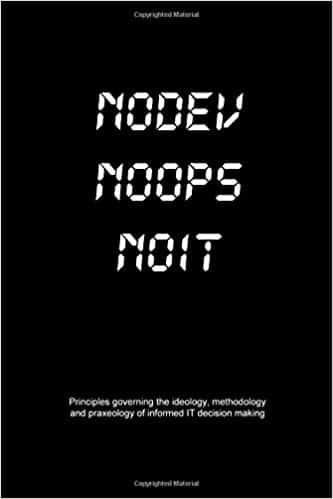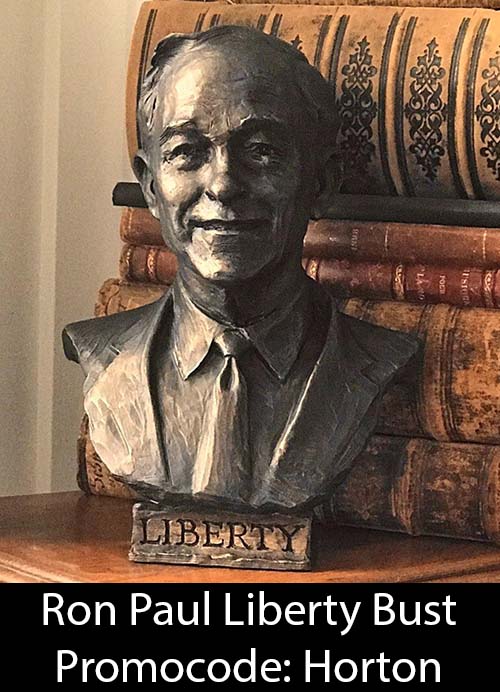Scott is joined by Joe Cirincione to talk about the situation in Ukraine. They start with some background on the U.S. and Russian nuclear arsenals. They discuss the levels of warheads and how its evolved. That brings them to the current crisis, where Cirincione says nuclear weapons are in the mix. They discuss how recent history has led to what’s happening. Finally, Cirincione explains the technology of nuclear defense systems and how it plays into our current situation. They end on a slightly positive note with the good news coming out of JCPOA negotiations with Iran.
Discussed on the show:
- “New scientific review punctures myth of missile defense” (Responsible Statecraft)
Joseph Cirincione is a distinguished fellow at the Quincy Institute and a national security analyst and author with over 35 years of experience working on these issues in D.C.
This episode of the Scott Horton Show is sponsored by: The War State and Why The Vietnam War?, by Mike Swanson; Tom Woods’ Liberty Classroom; ExpandDesigns.com/Scott; EasyShip; Free Range Feeder; Thc Hemp Spot; Green Mill Supercritical; Bug-A-Salt and Listen and Think Audio.
Shop Libertarian Institute merch or donate to the show through Patreon, PayPal or Bitcoin: 1DZBZNJrxUhQhEzgDh7k8JXHXRjYu5tZiG.
Transcript:
Scott Horton: Introducing Joe Cirincione from the Ploughshares Fund, and here he is, writing at the Quincy Institute. Welcome back to the show, Joe. How are you doing?
Joe Cirincione: Just great, Scott. Thanks for having me back on.
Horton: I don’t think we’ve spoken since the Bush years, but I’m very happy to talk to you again.
Cirincione: Thank you. Great to be on. What do you want to talk about today?
Horton: Well, there’s a few different important topics, but you wrote this really important piece for the Quincy Institute at ResponsibleStatecraft.org: “New Scientific Review Punctures the Myth of Missile Defense.”
Are you trying to tell me that George W. Bush tore up the Anti-Ballistic Missile Treaty for no good reason, Joe?
Cirincione: That’s exactly right. And particularly in light of the Ukraine crisis, we can look back at the last 20 years and see that tearing up these arms control agreements was not a very good idea. We really took down a lot of the guardrails that we wanted to have, and it began with the tearing up of the ABM Treaty. Remember, this is the treaty that Richard Nixon negotiated with Henry Kissinger as part of his effort to limit nuclear arms. The logic was that if you’re going to limit the number of offensive nuclear weapons you could have, you have to limit defenses. And the reason is simple: Any defense can be overwhelmed by an offense. So if a country is going to build up a defensive system, the easiest thing for the adversary to do is increase the number of offensive weapons. That was the offensive/defensive cycle that was going on in the beginning of the 1970s when Nixon and Kissinger negotiated these treaties. We were going to reduce offensive, and we had to limit defensive.
In 2002, George W. Bush decided that no, we now have a technological solution to this. We have weapons that can intercept the other side’s ballistic missiles. We’re tearing up the treaty. We’re going to deploy a defensive system. That was now 20 years ago, and we’re no closer to having a system that works today than we were when George W. Bush made this terrible decision.
Horton: Can we rewind about a half a generation from that point and go back to the greatest tragedy that ever took place in the history of humanity, which was the Reykjavík Summit between Ronald Reagan and Mikhail Gorbachev, where they came — according to all accounts I’ve ever heard of or read — within a hair of abolishing all nuclear weapons from the face of the Earth? Then, isn’t it the case that Reagan scotched the deal because his men told him this fantasy that we’re going to be able to shoot down all the incoming Russian nukes, and we would rather build up defenses than get rid of all the missiles we need to defend from in the first place?
Cirincione: You’re exactly right. I’ve spoken with the late Secretary of State George Shultz who was the only other American in the room with Reagan and Gorbachev and Gorbachev’s translator at that time, and he recounts — and the transcripts of that meeting bear him out — that Gorbachev said, “Let’s get rid of all strategic weapons, the long-range systems on missiles and bombers and subs.”
Reagan said, “Yes, and let’s go further. Let’s get rid of the short-range ones too.” And Gorbachev said, “Yes, let’s get rid of them all.” Reagan turned to George Shultz and said, “Can we do that?” George Shultz didn’t hesitate. He said, “Yes, we can,” and they walked out of that room with an agreement in principle to get rid of all nuclear weapons. But when Reagan ran this by his advisers, including Richard Perle — who many people call the Prince of Darkness — they were aghast at this. They didn’t want to give up the nuclear weapons, and they walked Reagan back. Reagan then went back to Gorbachev and said, “Look, we’ll do this, but we have to be able to deploy our missile defenses,” what was called the Strategic Defense Initiative at that point — the Star Wars program — “I have to be able to do this.”
And Gorbachev said, “No, no. I can’t go back to my military and give up my weapons and have you deploying these other weapons. How about if we keep that in the laboratory for 10 years, just in the research stage?” Reagan wouldn’t do it. He said, “No, I’ve got to have this insurance policy,” and that’s when the deal collapsed. That’s when the Reykjavík Summit ended in failure producing those grim photos you see at the end of both men not smiling at all.
It turns out they both were wrong. Reagan was wrong. He could have given it up. There was no miracle technology, and nothing has advanced since then to allow us to intercept long-range ballistic missiles. And Gorbachev could have let Reagan pursue this fantasy because nothing would have come of it. So we missed this moment to solve one of the greatest threats facing humanity, the threat of nuclear annihilation.
Horton: The wisdom of the staircase, right? Gorbachev must have been absolutely kicking himself that he didn’t just say, “But Mr. President, if we don’t have any missiles to shoot down, you don’t need anti-missile defenses, so let’s just…”
Then here’s the thing, you’re really killing me, because I had never heard the very reasonable counter-offer: “Let’s just study that together for 10 years.” The Soviet Union didn’t even exist for another two years after that, you know? And then, I’ve seen the pictures where Gorbachev is essentially following Reagan down the stairs from the building, where he’s getting in his limo, and Gorbachev is saying, “Mr. President, stop, let’s go back up there and talk about this one more time. Please don’t go.” But it’s too late, that’s it.
Cirincione: It’s too late. We missed the opportunity. To their credit, neither one of them gave up. They didn’t get the elimination they had hoped for, but a year later they did negotiate — which was one of Reagan’s biggest accomplishments — the Intermediate Nuclear Forces Treaty. Which again has something to say about the current situation we’re in. This treaty is where Russia and the United States agreed to destroy these brand-new nuclear weapons that they had been pouring into Europe that were so-called “intermediate-range” — not quite ocean-spanning, but bigger than short-range and medium-range missiles, such that Russia could hit European targets, while with our deployments in France and Germany and Italy could hit Russian targets. They said, “We’re going to get rid of them all.” And they eliminated almost 2,000 perfectly fine nuclear weapons attached to missiles and banned them globally.
Trump just tore that treaty up when he was in office because some of the people in our military wanted to deploy weapons like this again. He tore it up and said that we have nothing to worry about from Russia. Well, with Putin’s invasion of Ukraine, once again we hear talk about Russia deploying these kinds of weapons back into Europe, and on the American side, us deploying these kinds of weapons against Russia and against China. We never should have torn that agreement up.
Horton: That’s one of Putin’s stated fears now: “What’s keeping you from putting nuclear-tipped Tomahawk missiles in those dual-use Mk-41 missile launchers in Romania and Poland, now that you’ve torn up the INF Treaty?”
Cirincione: That’s exactly right.
Horton: Let me go back to Reykjavík for one second here because this has always been a thing of mine. I think I know the answer to this, but I’d like to hear what you think about this. What about the idea that even if Reagan and Gorbachev agreed to get rid of all of their nukes, that still leaves Britain, France, China, Israel, India, Pakistan and, at that time, I guess, probably South Africa. So what about them? Would the idea be that America and Russia would just lean on their friends and allies and say, “If we’re getting rid of our nukes, you’re going to get rid of yours too”? The idea that the rest of the world would just go along with that if the U.S. and USSR were arm-in-arm on that?
Cirincione: Well, nobody talks about unilateral disarmament, just the United States giving them up. Or even bilateral disarmament, just the U.S. and Russia. But it’s widely recognized that the United States and Russia have 90 percent of all the nuclear weapons in the world — we have about 5,500 weapons in our arsenal in various stages of readiness, and the Russians have about 6,200 in their arsenal. Everybody else has a couple hundred at most. France has about 300. China has about 300. So it’s widely recognized that in order for us to have real progress towards nuclear disarmament for all nine nuclear nations, you’ve got to get the U.S. and Russia to come down lower, to about a thousand weapons each, even a thousand deployed weapons each. You do that, and now you’re in the same ballpark as these other countries. Now you could have what some people talk about as a “freeze and reduce agreement.”
So, you get China in particular, but also the others, to freeze their nuclear arsenals at their current levels and for the U.S. and Russia to continue talks about further reductions so that now you’re having multilateral disarmament talks and everybody is in the mix, including India, including Pakistan, including Israel. They’re all in the mix, and they’re all talking about how to stabilize the situation so we don’t get to the brink of nuclear war.
Horton: On the Intermediate Nuclear Forces Treaty, the narrative went that the Russians were breaking it first, we think, because they got these missiles that, by looking at them, seem like they fall within the prohibited range. The Trump administration’s response to that was, “Oh yeah? We’re just going to tear it up,” rather than, “Let’s sit down and start negotiating and make sure we can save this treaty in the name of Ronald Reagan,” or something like that. But essentially what was going on here was that it looked like the Russians were violating the treaty, but they weren’t deploying them in Europe, they were deploying them along their frontier with China. Or at least that’s why they were doing this. I don’t know if they were deploying them yet, but that was the purpose of it. And then that that’s why America tore up the treaty, too. They weren’t interested in putting Tomahawk H-bombs in Romania and Poland; they want these mid-range nuclear missiles for China, too.
So, America and Russia left this Intermediate Nuclear Forces Treaty that kept our medium-range nukes out of Europe since 1987, in order that they could both target China. Russia and China are getting along better than ever now — it seems like a real waste of effort on their part. I wonder what you think about that. Is that really right? We have, as you were just describing, a potential nuclear standoff in Europe where we just didn’t need to have one at all.
Cirincione: Well, I would say two things. First, one of the most disturbing things about this Ukrainian crisis, in addition to the people being killed on the ground right now, is how Putin is talking about nuclear weapons. He is quite specific here. In his declaration of war, basically, he said that Russia has the largest nuclear arsenal in the world — that’s true — and that anyone who dares to oppose them will be met with a level of destruction that they have never experienced. So he is directly making nuclear threats to the United States, to NATO, to anybody who would dare oppose his invasion. This is front and center in his mind. I know most Americans and most people in the world don’t think about nuclear weapons, but Putin does. Putin does.
You realize that we have squandered so much time not pursuing more forcefully these efforts to reduce these weapons, to separate them from conventional conflicts, and while we haven’t been doing that, the militaries in the United States, Russia and other countries have been moving to reintegrate nuclear weapons to their combat strategies. In other words, they are blurring and in some cases erasing the firebreak between nuclear weapons and conventional weapons, so that nuclear weapons just become another step up the ladder. The worry is that if Putin loses in Ukraine, or if he starts to lose, he may be tempted to use a nuclear weapon to prevent that loss. Which, for him, would not just be the loss of a battle or the loss of a war, but maybe the loss of his rule. Maybe the loss of his life, if the Russians rebel against this insane war that he started. So nuclear weapons are very much in the mix of this crisis that the invasion of Ukraine has started, and that brings us back to the INF Treaty.
I was on an advisory board of the State Department during that time, and I saw the information about Russia’s cheating, and yes, they were, no question about it. They were testing a kind of prohibited intermediate missile, and testing was also prohibited by the treaty. The development of a system like that is prohibited anywhere in the world, not just in Europe. The failure of the Obama administration at that time was not to do something about it. I was appalled. We knew about this for several years, and the Obama administration could not come up with a way to enforce the requirements of this treaty and to prevent the deployment of that Russian system, wherever it was deployed.
Then Trump comes in, and he just rips it up. This is completely insane. Just because somebody is speeding, you don’t repeal the speeding laws. Just because somebody kills somebody else, you don’t repeal the laws against murder. But that’s what we did with the INF Treaty. Because they were cheating — at the margins, but still cheating — we tore up the whole treaty. I believe that we’re going to come to regret this if we see Russia once again deploying these systems that we could have stopped in Europe or on the border with China.
Horton: But so, is that really right? That in both cases, Russia and America really weren’t even doing this for each other, but they were doing it for China?
Cirincione: It’s certainly true of us. This is what we wanted. The day after Trump pulled out of the treaty, the military tested a missile that could go in these intermediate ranges, but they had been blocked. What they wanted to do was deploy it.
Horton: Speaking of violating the treaty against developing the things, right?
Cirincione: Right, you can’t even develop it. You can’t test a weapon at this range. It was a very good treaty.
Horton: Well, they had one ready. They had apparently developed one, if they had one ready to test the day after Trump tore the thing up, right?
Cirincione: It was an existing missile that had never been tested at that range, so now they could test it at that range. Now, I don’t know what Russia’s main purpose was. They were certainly looking at China, but I wouldn’t say they were looking exclusively at China. For us, it was all about China; we weren’t that concerned about Russia at that point. We are now.
Horton: I hate to keep going back to the 1980s on you, but I was just a kid then. I lived through this and was paying attention, but I was in elementary school, so I don’t know, but the way I remember the story, and as I’ve kind of learned it since then, is that isn’t it right that Reagan did this massive buildup of medium-range missiles in Europe, I believe in response to Russia deploying them first, and these were the Pershings, right? He spent a trillion dollars on this or whatever, and then he turned right around and negotiated them away again. As you said, they destroyed all these perfectly good missiles, and that essentially, he had played this extreme game of nuclear poker here, like, “Oh, you want to put medium-range missiles in Europe, huh? I’ll show you medium-range missiles in Europe!”
This had people terrified in Reagan’s first term, right? And then he did the right thing, got rid of the things and signed this magnificent treaty that only now we’re talking about has been destroyed 30 years later.
Cirincione: You’re killing me here, Scott, because I was working on the House Armed Services Committee in the 1980s. I was already dealing with these things while you were — were you born?
Horton: I was born in ’76, so I was in 3rd and 4th grade during Hands Across America and all that stuff.
Cirincione: So I’m doing this, and I was deeply opposed to Ronald Reagan. I thought he was the Devil incarnate. I was working for the Democrats on the House Armed Services Committee. Remember that Reagan comes in on this myth of the “window of vulnerability.” All the hawks had rallied around the growing Soviet threat, and the fear was that Russia was soon going to have a first-strike capability, meaning that they would have enough nuclear weapons to destroy all our weapons in a nuclear strike and to keep enough in reserves that they could deter us from launching whatever might remain. This was the “window of vulnerability,” they said, and we had to build up our nuclear forces. Reagan comes in, and he does that. He starts building a new MX missile, the ICBM. A new bomber. A new sub. He just goes whole-hog. The defense budget skyrockets again.
Then in his second term, he makes a pivot, and it turns out that he really is a nuclear abolitionist. He really thinks that we could, as he said in his second inaugural address, eliminate nuclear weapons from the face of the Earth, and he tries to do it. He was influenced by things like The Day After. He was influenced by the intelligence he was getting, where he learned that the Soviets really thought we were going to attack first, and he never conceived that the Soviets could think that we would attack them. He’s convinced that these weapons have to be eliminated, and he comes really close to doing it. He misses it — and I write about this in the Quincy issue brief on nuclear forces — but then he does the INF Treaty and he gets rid of those. Then he starts negotiations on strategic systems, and he starts what he calls the START talks — the first treaty that would actually eliminate weapons rather than just limit the arsenals. He negotiates a treaty that cuts U.S. and Russian — then Soviet — forces in half. His successor, George H. W. Bush, continues that work. He also cuts U.S. and Russian forces in half, and he goes further, unilaterally reducing, taking thousands of weapons off of our Navy ships, de-nuclearizing the Army, pulling the nuclear weapons out of Korea, etc. You really got this feeling like, “It’s over. We’ve escaped. We’re safe now. We didn’t eliminate them all, but we’re on the way.”
Sure enough, here we are, 30 years later, and we are down by 80 percent from the heights of the Cold War. We had about 66,000 weapons during Reagan’s term. We’re down to 13,000 weapons globally now, but the reductions have stopped. The steam has gone out of nuclear disarmament. Obama failed in his vision of making the elimination of nuclear weapons the focus of his national security strategy. Trump reversed it and started beefing up again, pouring money into these systems. Now, Joe Biden is about to issue a Nuclear Posture Review that will basically stay the course. It will tweak Trump’s policies around the edges, but it will not fundamentally change them.
The crisis in Ukraine is showing us how dangerous it is not to continue to reduce and work towards the elimination of these weapons. These are one of the three great threats that threaten destruction on a planetary scale. Climate change can do it over decades. Pandemics can kill millions in years. Nuclear weapons can destroy humanity in an afternoon. We ignore this danger at our peril.
Horton: Yeah, absolutely right there. You already absolutely condemned what Putin is doing. As we’re recording this on Thursday morning, we’re about 12 hours into a full-scale assault on Ukraine, and presumably they’re going all the way to Romania. Maybe they’re only going to take the eastern half of the country. We’re at that point here that there’s just no question whatsoever that this is — I won’t say entirely unprovoked — absolutely unreasonable and unnecessary. So that’s the question, to a guy like you who’s been around this whole time, who knew better all along, and warned them all along. For example, “W. Bush, you shouldn’t tear up this ABM Treaty.” “Barack Obama, you should not put these anti-missile missiles into Romania and Poland because this guy Putin is dangerous.” If you listen to what Putin says, he takes this threat, as you put it earlier, very seriously. We don’t think about nukes. He thinks about nukes. This was in his rant the other day, “What are we going to do? We’re going to let them put missiles in Ukraine pointed right at Moscow? No. Nyet. It’s on now.”
So, I’m not saying he’s justified in any way. I’m 100 percent with you. I’m not saying it’s reasonable, but I’m saying what he’s doing is rational. And we know that it is because, as people like you have warned for 25 years, we should not be expanding NATO, tearing up our treaties, and getting in the Russians’ faces in a way that puts them in the position to do something very horrible, which is I think what we’re watching play out this morning. Right?
Cirincione: Yeah, it really does underscore that when you have a moment when you’re able to move forward on reducing nuclear weapons, you really have to seize that moment because it opens and shuts very quickly. In this case, there’s nothing that we did that justifies what Putin is doing, let’s be clear about that, but a lot of what we did set the stage for what Putin is doing. The NATO expansion that George Kennan warned us at the time — in the 1990s when the Warsaw Pact collapsed and we were just starting to let those Warsaw Pact countries into NATO — he warned that this was going to stimulate the worst kind of militaristic and revisionist nationalist fears in Russia. Which it did. Obama was warned when he put in what he said were defensive missiles — which is true, we were putting interceptors in Poland and Romania to try to intercept an Iranian ICBM, should they develop a nuclear weapon or an ICBM. They have developed neither, but we still put those missile tubes in Poland and Romania.
The problem, as you point out, is that these are the same kinds of missile tubes we have on our Aegis cruisers and destroyers. In fact, it’s called a land-based Aegis system. And while we have interceptors in them now, those same tubes could house offensive nuclear-tipped missiles like the Tomahawk cruise missile, and Russia wouldn’t know what was in the tubes because there is no arrangement for inspections.
I was on the advisory board in the State Department during the Obama years. I heard the Russian complaints, and they were brushed off by State Department officials as “ridiculous,” the same way Reagan thought it was ridiculous that we would ever attack Russia. Obama officials said, “No, NATO is a defensive alliance.” Well, it doesn’t look defensive to Russia. And we don’t need these weapons. They’re serving no purpose.
So what is the point of keeping those interceptors in Poland and Romania? It looks like you’re preparing for an attack on Russia. That’s why one of Putin’s demands, in the letters he sent back to the United States and Europe on this, was that those missiles had to be taken out; as well as, by the way, that the U.S. had to rejoin the INF Treaty. So these issues are front and center for him, even if they’re not for us.
Horton: I have a friend who is very upset, who was saying to me, “Putin is insane. He’s insane. He’s insane.” And I’m saying, “Listen, the guy is brutal — maybe that’s the word that you’re looking for — but this is strictly business.” If you listen to his statements, he does talk about older humiliations and this kind of thing, but even in the middle of his rant, he’s saying, “Look what happens. The communists gave away Ukraine and let them be independent. But the Americans want to have it. They won’t let it be independent. Either it belongs to us or it belongs to them. Well, it belongs to us, not them.” He even said, “Kiev is run out of D.C.,” which is kind of true. So what he’s doing is obviously a severe move, but it is rational if not reasonable.
Cirincione: I’m with you. I think it’s very dangerous to brush this off as insanity. Is megalomania a type of insanity? Yes, it is. I got a degree in psychology from Boston College, so I can comment. [Laughing] Yes, it is. And is he a megalomaniac? Yes, he is. But is he crazy like they mean that he’s irrational, cannot be reasoned with? No, because that excuses some of the mistakes we made that paved the road to this moment. Again, nothing we did justifies what Putin is doing, but it has certainly set the stage for what Putin is doing. You can look back and see these missed opportunities. These things that we thought were signs of strength on our part were very threatening not just to Putin, but to lots of Russians. The ignoring of Russian concerns, when we could have incorporated them fairly easily into our plans.
It really was the hubris of the “unipolar moment,” when we thought we were the only remaining superpower in the world and we could do whatever the hell we wanted. If that meant intervening in Kosovo to end atrocities, we would do it. If that meant surrounding Iraq and then invading Iraq, we would do it. If that meant occupying Afghanistan for 20 years, we would do it. If that meant killing almost a million people over 20 years in this “War on Terror,” we would do it.
Every step of the way, we thought this was justified and that it really was nobody else’s business. But Russia didn’t feel that way. You can imagine Putin looking at this and saying, “Look man, if you can do that, why exactly can’t I do this? If you can invade another country, why exactly can’t I? Oh, what? This is not a Middle Eastern country, so it doesn’t count?”
Those are the kinds of norms we set in response to which others are now saying, “I’m just doing what you did,” and we can see what it’s like. We’ve got to rethink what it would have been like if we had spent the last 20 years enhancing global norms, strengthening international law, reducing nuclear arsenals, and reducing conflicts, instead of acting the way we did in our hubristic arrogance.
Horton: He was sort of parroting the Americans, but I’m surprised that he didn’t outright say, “Listen, I’m concerned that they could develop nuclear weapons and give them to these Right Sector terrorists to use against us. And also, it’s our Responsibility to Protect. We think they’re going to wipe out the entire province of Luhansk. Just like you guys claimed about Gaddafi in Benghazi in 2011, Samantha Power said, ‘I have to intervene to save the people.’” What did they do in Libya? In Kosovo, they went around the UN entirely. In Libya, they lied to the Russians and said, “We’re just going to protect Benghazi, we swear,” and made a chump out of Medvedev who went along with it. This apparently enraged Putin, who returned to the presidency after only one term instead of two as had been expected, not just because the Americans did that war in Libya, but that they screwed the Russians on it so that they could launch the war, too. Just one more little thing there.
Cirincione: That is exactly right, Scott, and people forget this. Again, it doesn’t justify what Putin is doing, but you have to understand that we are not blameless here. The kind of policies we implemented set the stage for what’s going on now. And you’re right, he is echoing the same kind of charges that we made both about Iraq and about Iran. He said he will not allow Ukraine to have nuclear weapons. Well, that sounds a lot like George W. Bush’s justification for the invasion of Iraq. It sounds a lot like what presidents from Bush to Obama to Trump to Biden are saying about Iran. Neither one of those countries has nuclear weapons, right? Iraq couldn’t build a nuclear weapon. Iran can’t build a nuclear weapon, or it would take them many years to do it. Ukraine does not have nuclear weapons, cannot build nuclear weapons, but you still make this ludicrous charge. Putin is saying, “Well, it worked for those guys. I’m going to pull the same play here and see if it works for me.” And as you say, also adding in the Responsibility to Protect: “I’m protecting the Russians. That’s why I’m going in.” Again, standards that we invented. We set this up, the Responsibility to Protect. It’s coming back to bite us.
Horton: You mentioned Iran, and I want to ask you a question about Iran, but first, I want to ask you about a debate that I know of. It never happened right in front of me, it’s been a disjointed kind of a debate. My old friend Gordon Prather — who used to make nukes for Uncle Sam back in the day, was the chief scientist of the Army, a great anti-Iran-war-lies activist in the Bush years, and writer for us at Antiwar.com — he tells me, “Look, man. You want to take out incoming Russian nukes coming over the Poles in outer space? The only way to do that is with an enhanced radiation device” — in other words, a neutron bomb which doesn’t explode with heat so much, as it has a thinner shell so that the fission and fusion take place mostly in a radioactive form rather than just heat — then that radiation is what you would use to take out incoming nukes. And it’s a severe way to do it, but it’s the only way to do it. Because anything else, you’re trying to shoot a bullet with a bullet in outer space where everything is ice cold, so all your infrared and heat-seeking stuff is not going to work, and you’re talking about such high speeds. Just forget about it.
But then I met a guy who said, “Actually, that was my job, building these anti-missile missiles, and I’m here to tell you that we can hit a bullet with a bullet. But the question is: How much are you willing to pay for these bullets we’re firing at the bullets? Because it is a matter of cost. And if you’re willing to pay enough of a price for an anti-missile missile, yes, I can shoot down an incoming attack.” At least from North Korea, if they launched a handful. Russia shooting their whole arsenal on Doomsday? Forget it. So I wonder, what is your position on that?
Cirincione: No, we cannot shoot down a bullet with a bullet unless the other bullet is cooperating. That’s the way to think about this. When we first started doing these kinds of systems in the 1960s and ’70s, we couldn’t come close to hitting a bullet with a bullet. We couldn’t come close to having one of our interceptors actually physically hit the incoming warhead for all the reasons you said. So we armed them with nuclear warheads. Our first defensive systems that we deployed, the Sprint and Spartan systems in the late 1960s and early ’70s, were nuclear-armed. These were the systems that Nixon was going to eliminate. The Russians were doing the same thing. So we limited those to two sites per country. As it turns out, the Russians deployed one around Moscow, we deployed one around an ICBM field for six months before the Army itself, who was in charge of this system, said, “This is stupid,” and we took it down. So we have had no defensive systems.
In the 1980s and ’90s there was the dream, which Reagan promoted, of new kinds of technologies — laser beams, particle beams, speed-of-light weapons — that could do the job. Reagan was convinced that it could work. In 1987, the American Physical Society, the nation’s leading association of physicists, issued a study that said, “No. We’re nowhere near being able to develop weapons like this, and we won’t even know if we can do it for a good twenty years.” So that took the steam out of that balloon, and we went back to what we call kinetic interceptors. Not laser beams, but regular interceptor missiles. And we got better at getting them to be able to hit, and guess what? It turns out that under perfect conditions, you can do it. So we’ve had 19 tests of systems like this, and in half of them, we’ve been able to hit it.
But here’s the thing. The system has to cooperate. In these tests — they’re really demonstrations — we know exactly when and where and how fast the incoming target is coming at us. There is no attempt to deceive or suppress the defensive system. We have never tested them with the kind of simple countermeasures that our own intelligence services say any country can deploy, including simple balloons that look like a warhead — in the cold vacuum of outer space, a balloon travels just like a heavy metal warhead. We haven’t tested them against chaffs, simple things that can confuse and blind the radar, or responders or jammers or any of those things.
Horton: Just to clarify again, you’re saying that it’s not that we haven’t succeeded in a test, but that they haven’t even bothered to try to test that.
Cirincione: There was one test where they put up a balloon that looked too close to what the warhead looked like, and the interceptor missed. So they stopped doing it. All this time we haven’t been doing it. And this is what the new American Physical Society study says. They looked at the current interceptors — we have 44 interceptors based in Alaska and California designed to intercept a North Korean ICBM. Some in Congress and in the military say that we could deploy such a system to defeat a Chinese threat or a Russian threat. They looked at this, and they said, “No, it doesn’t work.”
The system itself is fatally flawed. The one that’s in the ground doesn’t work well enough. It doesn’t have enough reliability for us to depend on it. Even if it worked perfectly, it still couldn’t do it because of this countermeasure problem. By the way, it doesn’t account for enemy suppression techniques. For example, knocking out the radars before they launch their missiles — the kind of thing that you would expect an enemy to do. Nor do any of the other proposed systems that are on the horizon, what they call “boost-phase” intercepts. These try to intercept the missile when it’s just being launched, in that two minutes before it goes into outer space, when it’s slow and fat and hot, when you can see it more clearly and might have a better chance. They say you have to be too close to be able to do that, and you’d only have at most a minute or two of warning. It’s an impossible mission.
I hope this new study has the same kind of impact that the study did back in 1987, where it took the air out of the laser balloon. I hope it restores some kind of sense to the Biden administration and convinces them that they can’t be spending $20 billion a year on these missile defense programs. You have to go bring them all back to the laboratory, all back to the basics, and don’t start deploying systems or pushing systems into production until you know they can work. And that will be decades.
Horton: I mean, man, Joe, what you’re telling me here! This entire era, the whole 21st century long so far, starting with W. Bush tearing up this treaty in December 2001, just a couple months after Putin was the first person to call on September 11th and say, “I am at your service.”
Cirincione: Yeah, he announced it in 2001, and then he did it in 2002.
Horton: And this whole time, Obama was going along with this whole thing too, installing these radars and these anti-missile systems — again, from Mk-41 dual-use launchers that terrify the hell out of the Russians and provoke them this entire way. I was going to say, to Biden’s credit, that he was climbing down a little in his counter-offer to Putin, saying, “Yeah, let’s establish a verification regime for the missile stations in Poland and Romania so that you’re not upset about that,” but it’s just too little, too late, man. What are they even doing there? They don’t even work. They’re just decorations.
So let me ask you this. Is the controversy purely just the dual-use launchers and how they could be a disguise for Tomahawks, or is the threat really that the defensive missiles might work and that what the U.S. is doing is wearing armor to a fistfight, where it’s not defensive at all? It’s putting America in the position of being able to attempt a first strike, where they can take out enough of Russia’s nukes on the first hit that they feel like they can shoot down anything that survives for a retaliatory strike, because they have Russia ringed with these things. In Putin’s interview with Oliver Stone, for example, I think Stone even says, “Come on, you know these things don’t work, man. This is just a boondoggle for corporate America. You know how it goes.”
And Putin says essentially, “Yeah, of course, Oliver Stone. However, I’m in charge of security around here, man. What am I supposed to do when you’re ringing my country with anti-missile missiles? I’ve got to make better missiles, don’t I?” And it was a couple of years after that that he debuted in his speech all of his new missiles.
Cirincione: That is exactly right, Scott. You’ve got it. So let’s go back to the Poland and Romanian launch tubes that are there. I think there’s three factors. As usual, it’s never just one thing. So there’s three factors, and one is the offensive threat. I think that’s a genuine concern. The U.S. dismisses this as crazy, but if you’re a Russian and you’ve been attacked a lot, this is something you’ve got to be aware of. So that’s number one.
Number two is the point you’re making, and the Russians and Chinese are both acting this way. The anti-missile systems are the worst of all worlds. They don’t actually work, but the adversary can’t count on that. They’ve got to calculate that eventually the United States — because we’re so capable — might get them to work. So therefore, in order to preserve their deterrent, in order to keep their nuclear weapons capable of hitting the United States, they’ve got to make sure that they can penetrate any current or known defensive system. That’s exactly what Russia is doing, and Putin has a point. In 2001, when Bush announced this and then implemented it in 2002, Putin said, “Don’t do this. I’m going to have to respond to this.”
It took two decades, but in 2018 he unveiled five new “super weapons,” he called them — typical exaggeration, some of these things will never work — all designed to circumvent U.S. missile defensive systems and whatever we deploy in the future. Cruise missiles that could fly under them. Nuclear-powered torpedoes that we wouldn’t even detect. Powerful ICBMs that could attack us from the south, that would fly not over the North Pole but over the South Pole because all our defensive radars are north-facing. Maneuverable glide vehicles traveling at hypersonic speeds. You don’t need any of these unless you’re going up against defenses.
And now China is doing the same thing. China has a very small nuclear force, about 300 weapons, but they are now afraid that the U.S. is moving to a first-strike posture — just what we feared the Soviets were doing in the 1980s — that the United States is aiming to be able to launch a strike against their weapons and take them all out and then have a defensive system that can mop up the 10 or 20 that might be left. So China is doing what? It’s deploying new weapons. It might grow its force. It might double its force, maybe even triple it. It’s going to deceptive basing modes, mobile launchers and multiple silos, and it’s developing weapons that can evade our defenses — so not just balloons and decoys, but maneuverable warheads that you can’t track and therefore can’t hit — and hyper-velocity systems that could glide in through the atmosphere at supersonic speeds. All these things are happening.
Our response to this is to do what? Our response is to develop more nuclear weapons to counter China. And if this sounds like an arms race, you’re getting the point. This is exactly the dynamics of an arms race. We think everything we’re doing is defensive, everything our adversary is doing is aggressive and offensive, and we’re in the middle of it. This Ukraine crisis is going to make it worse. There’s not a chance in hell that Congress is going to reduce the military budget of the United States, even though we’re spending more on the military than we have since World War II. There’s not a chance that we’re going to cut that in the face of a war in Europe. There’s not a chance we’re going to cut nuclear weapons. Why? Because the first thing people go to in a crisis like this is strength, they want to feel strong. And if you’re a Democrat, you’re scared to death of looking weak on defense. The Democrats’ default position on defensive issues is to look strong. Whether they think it’s smart or not, what they’re concerned about is appearance, not capability.
Horton: Yeah, exactly. “No. What if they call us wimps? We can’t have that. We’ve got to act tough” — to appease all the bullies who are bullying us. Meanwhile, out here in the real world, that’s the only thing that’s presumably a little bit better about the Democrats, that they’re a little bit less hawkish than the Republicans. Which is not even really true, they’re just absolutely horrible — but it’s rumored to be the one good thing about them, you know?
Cirincione: I mean, obviously, there’s Democrats who do want to cut the budget. In fact, the Chairman of the House Armed Services Committee, Adam Smith, is one. He thinks we have way too many nuclear weapons. But does he do anything about it? No, he does not. Because he knows that the committee won’t go along with him. He couldn’t get the Democrats in his own committee to vote for cuts to the budget or to cut nuclear weapons, so now he doesn’t even try. And I’ve got to tell you, a lot of what is the problem here is not just this political perception, but the hammerlock that the military corporations have on the Congress and on the Pentagon. We think about nuclear weapons the way we’ve been talking about them, as strategic moves and countermoves and defensive systems, but they’re also a product. They’re a product that a corporation makes, and corporations, as we now know, will sell you products that will kill you. Whether it’s tobacco or opioids or false cures for COVID, if they can make a buck off it, somebody’s going to sell it to you. The same is true for nuclear weapons.
We are set to spend $634 billion this decade on nuclear weapons — $634 billion, that is a very large market. Northrop Grumman and Lockheed and Boeing and Raytheon make a lot of money on nuclear weapons, and they don’t want anything to disrupt that market. They deploy an army of lobbyists in Washington. They contribute generously to members of Congress. They have a revolving door, where members of the military cycle in between programs to build these weapons and corporate offices that sell these weapons. They flood Washington think tanks with grants to mute criticism of their programs. They advertise heavily in Washington media markets to sell these as instruments of peace, not instruments of war, and they succeed. I mean, you don’t have to think too far back to when you saw strategic bombers flying over a football game, it happens all the time. We’ve accepted these into our American vision, and it works, it’s very profitable, and it’s very hard to shake. So it’s not just politics; it’s profits that are keeping us on the nuclear knife’s edge.
Horton: That’s such an important point. I’ll speak from my own ignorance, and I know it’s therefore fair for me to project it onto the rest of the population too, but you and I could talk about any kind of crooked government boondoggle all day and all night, and still the part of my brain that says, “You know, nuclear weapons is the same racket.” I put that off until last to understand. Even knowing everything I knew about the military-industrial complex and how they pushed their crappy fighter jets and every other thing, somewhere in the back of my mind was this fantasy leftover from 1980s movies or my 1980s government school education, that essentially, nuclear weapons are a completely demand-side economy. The military tells the Congress how many nukes they need, and the Congress buys them for them.
But I mean, what? Are you telling me that you have H-bomb salesmen like you have used car salesmen? Or you have, say, gun companies who want that military contract or that FBI contract or something like that? People out there beating the bushes to see if they can get rid of H-bombs like an inventory of furniture down at the outlet? Yeah, that’s exactly what it is: “Man, I’ve got to get rid of these H-bombs, Senator. You’ve got to help me get rid of these H-bombs.” And that’s exactly what it is, no different than any other government racket in America. That’s what you’re telling me here?
Cirincione: It is. We think that some things are sort of immune to market forces, but no, I’m telling you…
Horton: Those aren’t market forces; those are contract forces. That’s different, right?
Cirincione: Yes, they’ve got a product to sell. I was on the staff of the House Armed Services Committee and the Government Operations Committee for almost 10 years, and I was regularly visited by these lobbyists, taken out to lunch, when we could still do that. I heard their briefings. I went out to their facilities. I saw where they built them. I went to the congressional districts which are heavily dependent on these contracts for jobs. I visited the missile fields. I’m telling you, it is a very large, very expensive, very powerful nuclear-industrial complex. It is very, very hard to go against it, which is why they win.
You have to have a president who’s willing to counter this. You can’t do it at the Assistant Secretary level or even, quite frankly, at the Secretary of Defense level. You’ve got to have a president who is determined to cut it. That’s why the only time we’ve really made progress on this is when we’ve had Republican presidents cutting the nuclear weapons. Reagan did it. George H. W. Bush did it. W. Bush actually cut the nuclear force in half, and he was concerned about different things, not nukes. Clinton? Obama? Nope. They kept the nuclear arsenal pretty much flat during their eight years in office, and Joe Biden unfortunately looks like he’s going to do the same with his Nuclear Posture Review coming out in a few weeks — changes at the margin. The president has not made this a priority, and if the president doesn’t, the machine wins.
Horton: Here’s the silver lining that probably isn’t going to matter because we’re all going to die, but Joe, what’s going on with the JCPOA, are they actually going to save that thing?
Cirincione: We are, this is the good news. One of the issues that has embroiled American politics for almost two decades now. We might be back to restoring the deal that shrank Iran’s program; that put it under a microscope; that froze it for a generation; that Donald Trump foolishly tore up, saying that he was going to give us a better deal and that he was going to hammer Iran with maximum pressure that was going to cause them to comply or collapse. None of that happened. The situation got worse. Iran is closer to being able to build the material for a bomb now than they were during any other previous period. It looks like we’re going to get that deal back perhaps this week, but most likely next week.
And here, even though the Russians are at war with Ukraine, the Russians are still cooperating in these talks. They’re part of the talks. China is cooperating with these talks as they did, by the way, in 2014, when there was also a conflict in Ukraine and also the talks going on. So I think we’re going to get this deal back. It’ll be a big win for Biden, and it actually might be good that it happens during this time of the Ukraine crisis because it may take some of the political heat against it. There are always hardliners ready to slam any president who negotiates an agreement as an “appeaser,” as “weak.” I think Biden is going to be able to withstand that quite easily because the forces have changed. The countries in the region want the deal back. The military and intelligence officials in Israel want the deal back. The resistance to the deal is still there, still well funded, but it is much smaller than it has been in the past. So I think that is the silver lining. At least we’re going to solve that nuclear problem.
Horton: And boy, this thing going on with Russia and Eastern Europe sure makes the Ayatollah and little old Persia seem like a sideshow, anyway. Can somebody just get the Assistant Deputy Secretary of State to take care of that while we’re dealing with important business over here? You know what I mean? Which hopefully means cooling things off and backing down and trying to negotiate, not escalating.
Can you tell us, does this mean that they’re abandoning all their dumb tough talk about abolishing the sunset provisions and adding provisions about Hezbollah and missiles and everything under the Sun? And does it mean they’re really willing to lift the sanctions in the deal? Which Obama sort of kind of did but never really finished following through on, I don’t believe. Trump certainly never followed through on them. So, in other words, are the Biden guys climbing down a few rungs on this ladder, enough that the Ayatollah is going to welcome them back into the deal? Or is it that the Iranians are really seeking some compromise here on their side, too? I don’t know what they’ve got to do. I know they’re not promising to abandon their mid-range missile program.
Cirincione: Every successful international agreement requires two things: that the sides compromise and that the sides are all able to declare victory. So it’s got to look like a win for both sides. This is not the Japanese on the deck of the USS Missouri unconditionally surrendering. This is an agreement that is reached, and there’s something in it for both sides. We’re going to go back to the agreement we had, which, I will remind you, was working. It was impossible for Iran to build a nuclear bomb under that agreement. It reduced Iran’s nuclear capability significantly. Whatever else Iran was doing, at least they didn’t have a nuclear bomb to back it up. It also provided sanctions relief for Iran so that they could start to do business with the rest of the world. That’s what they want. We want the limitations, the restrictions and the reductions in the program, and the Iranians want to be able to sell their oil, and guess what? We actually want them to sell their oil. You see what’s happening to the price of oil this week? That Iran deal is going to increase the supply of oil globally, it’s going to lower oil prices, it’s going to have a positive impact on inflation in the West, particularly in the United States. So this is actually going to be a good deal. This is going to be a win-win. We’re going to win for the reasons I just cited, and Iran is going to win because they’re going to start making money again.
And as we’re making this deal, it isn’t that the countries in the region are afraid that Iran is now going to go on a tear, flush with petrodollars, and is going to start funding Hezbollah. No, what you see is that diplomacy is increasing in the Middle East. All of Iran’s rivals — Saudi Arabia, United Arab Emirates, Qatar, Oman — they’re all in diplomatic talks with Iran right now. There’s talks of the president of Iran visiting Saudi Arabia. Boy, would that be a region-changing event! So you see that there’s more good news than just the JCPOA coming back. It looks like we might be able to start getting dialogues going on the regional level that can address the regional issues, like support for Hezbollah, if Israel is willing to talk; the Saudi-Iran rivalry; or limits on Iran’s ballistic missile program. But all of these have to follow the restoration of the JCPOA. That’s the foundation for any further diplomacy. You can’t do it all in one deal. You’ve got to build a new security regime brick by brick. That may be what the restoration of the JCPOA allows us to do.
Horton: Great. Alright. Thank you so much, Joe. It’s really great to have you back on the show. I really appreciate it a lot.
Cirincione: My pleasure, Scott.
Horton: Thank you. Alright, you guys, that’s Joe Cirincione, formerly at Ploughshares and now at the Quincy Institute for Responsible Statecraft, ResponsibleStatecraft.org, and you’ve got to check out this really important piece: “New Scientific Review Punctures the Myth of Missile Defense.”
Podcast: Play in new window | Download
















